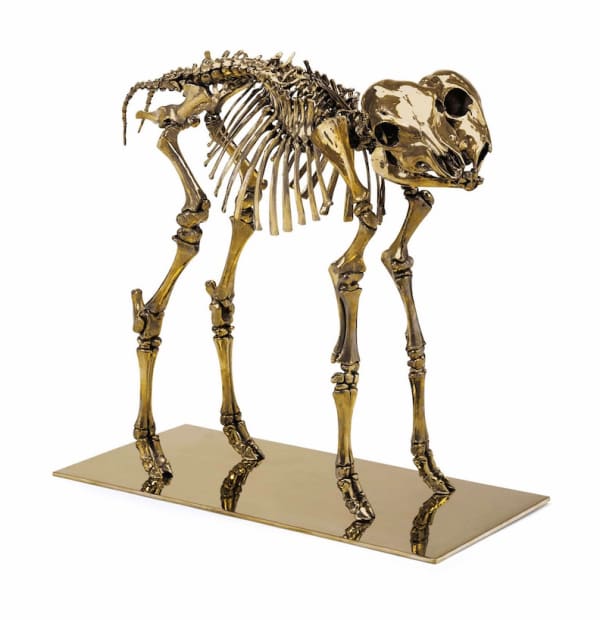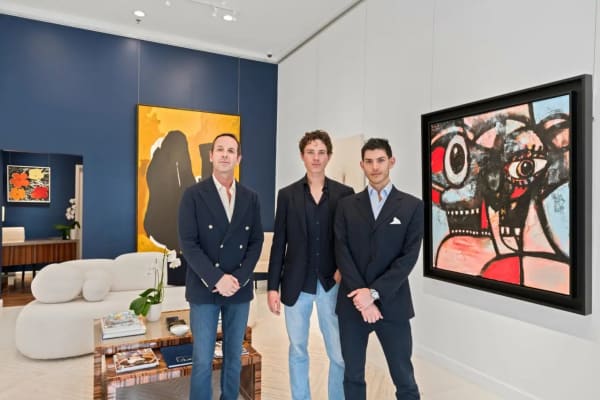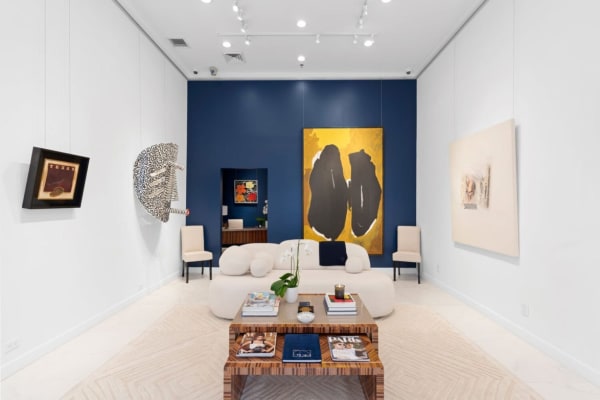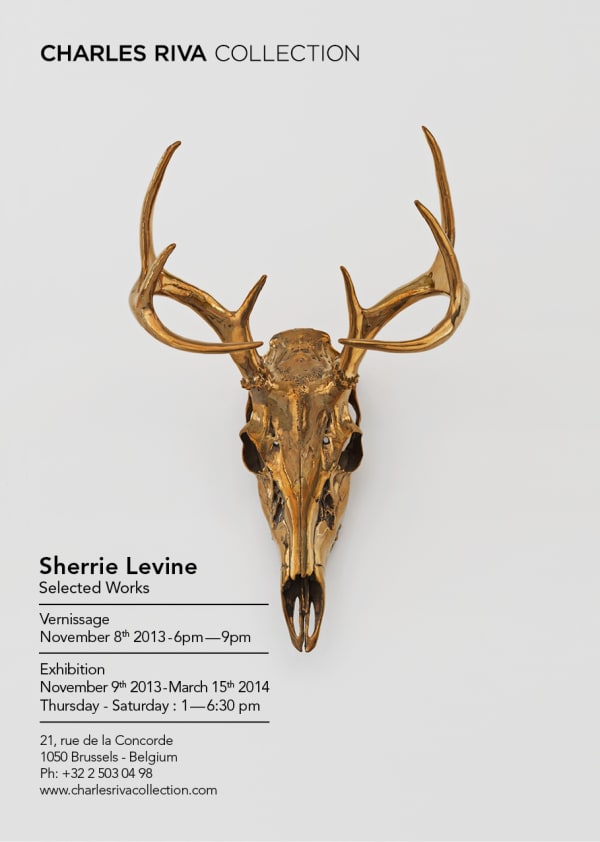Sherri Levine American, b. 1947
Overview
"I try to make art that celebrates doubt and uncertainty" -- SHERRI LEVINE
Sherrie Levine rose to prominence in the 1980s as a key figure in the Pictures Generation. The works by Pictures Generation artists perform a beguilingly simple aesthetic sleight of hand—taking one thing and, with sometimes only the slightest intervention, transforming it into a critique of itself. Where Barbara Kruger turned her gaze toward the contemporary politics of consumerism and greed, and Richard Prince fixated on the cowboy, that quintessential American icon of rugged masculinity, Levine set her sights on something even more sacred: the canon of art history itself. Cast in bronze and polished to resemble gold, the work presents the skeleton of an abomination: a two-headed calf. This explicit reference to the golden calf of the Bible—a false idol worshipped by the Israelites—is complicated in two crucial ways. First, Levine strips the calf of its flesh, removing any trace of innocence or vitality the animal might symbolize, and replacing it with the stark, unsettling implications of death. Second, the calf is rendered grotesquely deformed, its two skulls emerging from a single neck. This mutation provokes a range of emotional responses—from empathy to revulsion. The two-headed calf becomes both tragic and abject, a powerful metaphor for the seemingly random, cosmic cruelty of existence. It also operates as a chilling symbol of duplicity and excess—perhaps even a pointed jab at the culture of avarice and spectacle that surrounds the contemporary art world. As Roberta Smith suggested in her review of Levine’s 2011 Whitney Museum survey, Mayhem, the piece may well be a barb “aimed at the art market” (R. Smith, “Flattery (Sincere?) Lightly Dusted With Irony,” The New York Times, November 10, 2011).
Sherrie Levine lives and works in New York. Her early work was included in the seminal 1977 exhibition Pictures at Artists Space, New York. In 1981, she debuted her now-iconic and controversial series Untitled (After Walker Evans), which, alongside other appropriation-based projects, established her as a central figure in the Pictures Generation—a loose group of artists who, in the media-saturated landscape of the 1980s, employed strategies of appropriation to interrogate authorship, authenticity, and originality. Levine’s work has been the subject of solo exhibitions at major institutions worldwide and is held in the collections of leading museums internationally.
Works
Press
-

A Closer Look: A Roundup of Art Happenings in Palm Beach
Whitney Schott, Palmer, February 20, 2024 -

The Artful Life: 7 Things Galerie Editors Love This Week
Palm Beach Exhibition Features Masterpieces from the Wynn Fine Art CollectionLucy Rees, Galerie Magazine, February 13, 2024 -

FORBES
LA COLLECTION D’ART RÊVÉE PAR CHARLES RIVADesieree de Lamarzelle, Forbes, November 16, 2023 -

Collecteurs Magazine
Charles Riva on collecting what you loveLara Konrad, Collecteurs Magazine, October 3, 2019
Exhibitions
-

SANS TITRE
Charles Riva Collection x Wynn Fine Art: Palm Beach 8 Feb - 14 Jun 2024Sans Titre included prominent artists such as Andy Warhol, Keith Haring, Sherrie Levine, Ed Ruscha, Robert Motherwell, Richard Prince, and George Condo. The title Sans Titre reflects a common practice...Read more -

Sherri Levine: Selected Works
Brussels 8 Nov 2013 - 15 Mar 2014Levine is known for her series of re-photographed works by famous photographers like Eliot Porter, Edward Weston, and Walker Evans. Her production includes a wide range of medium including photography,...Read more










